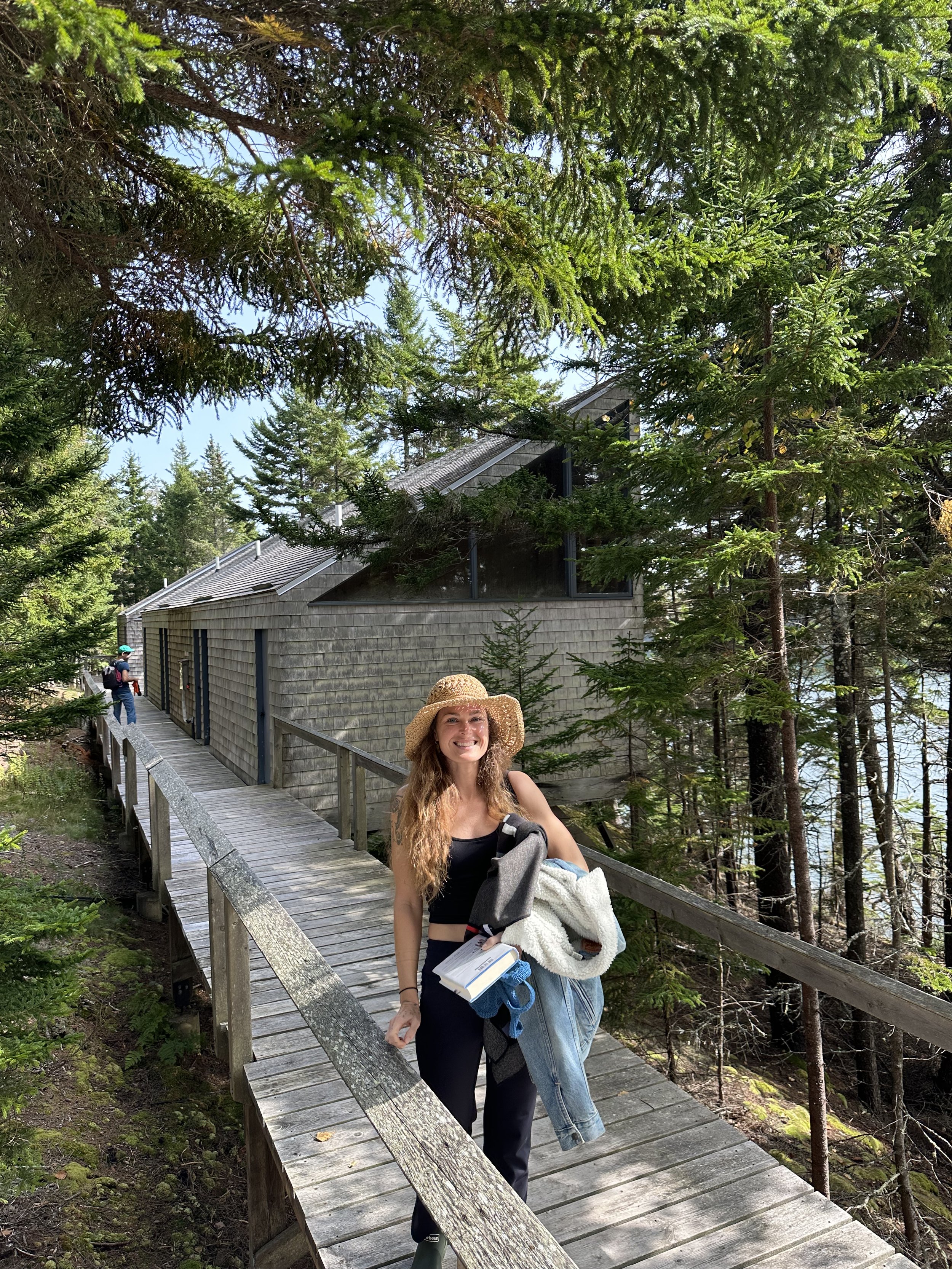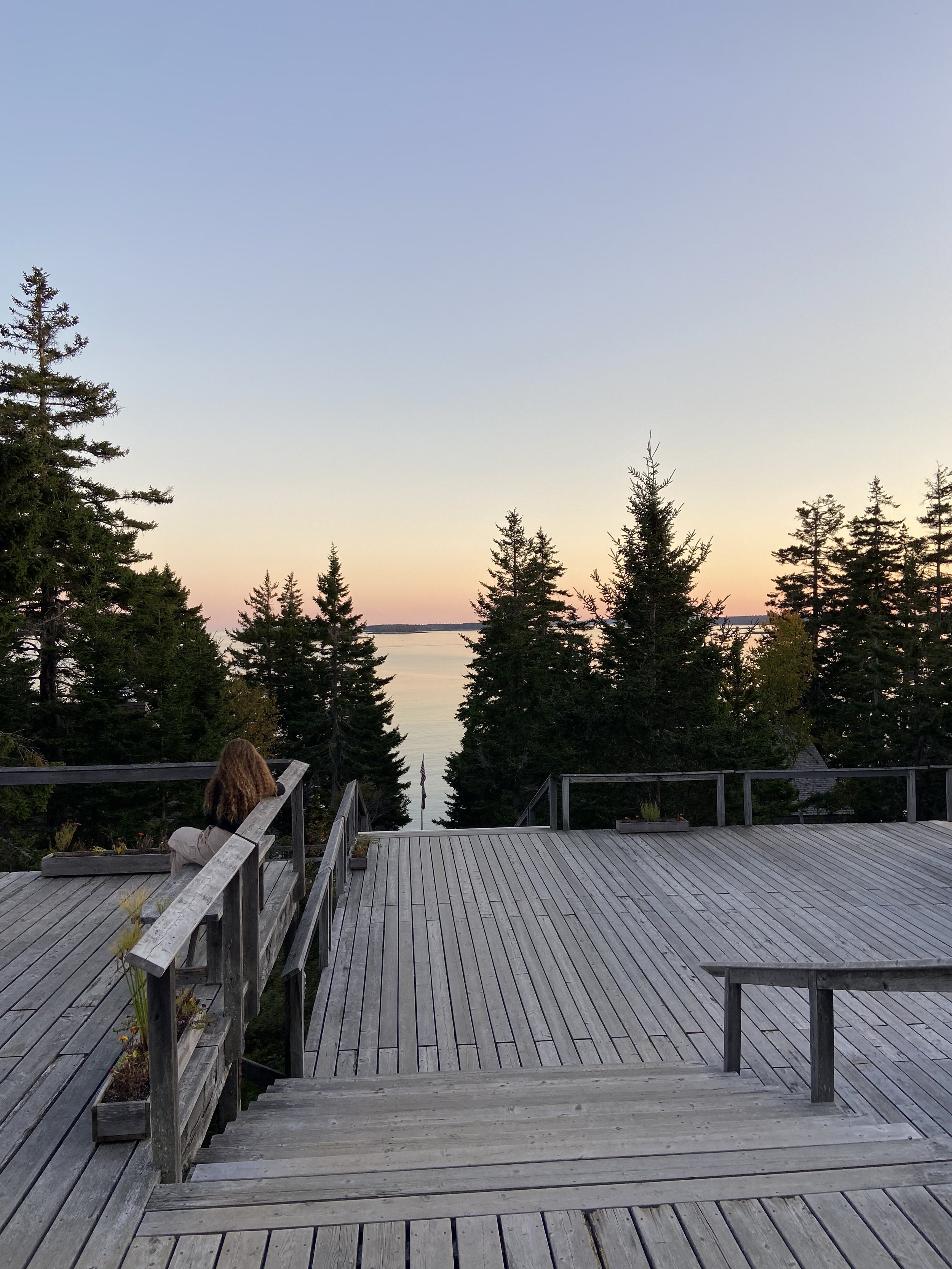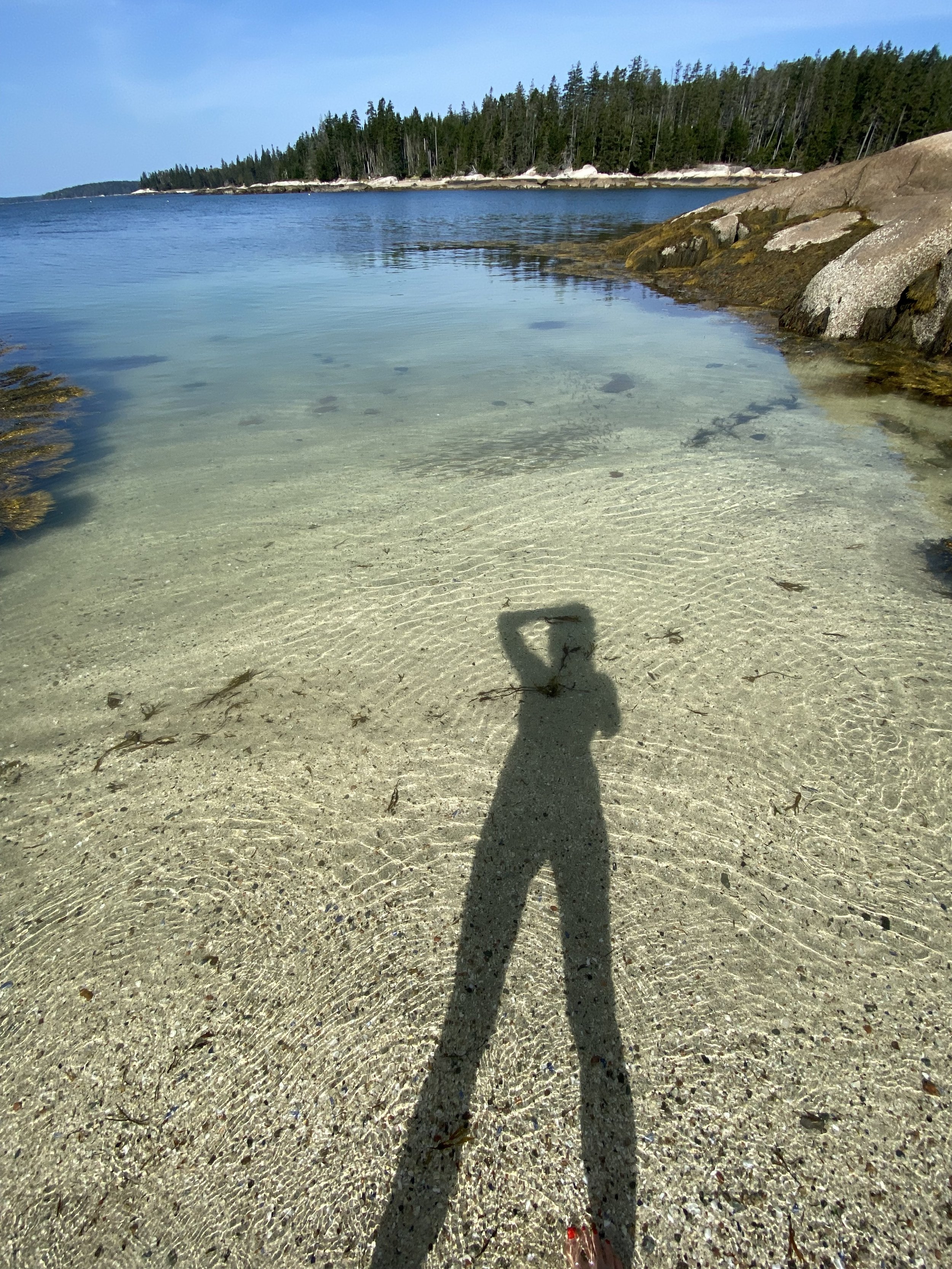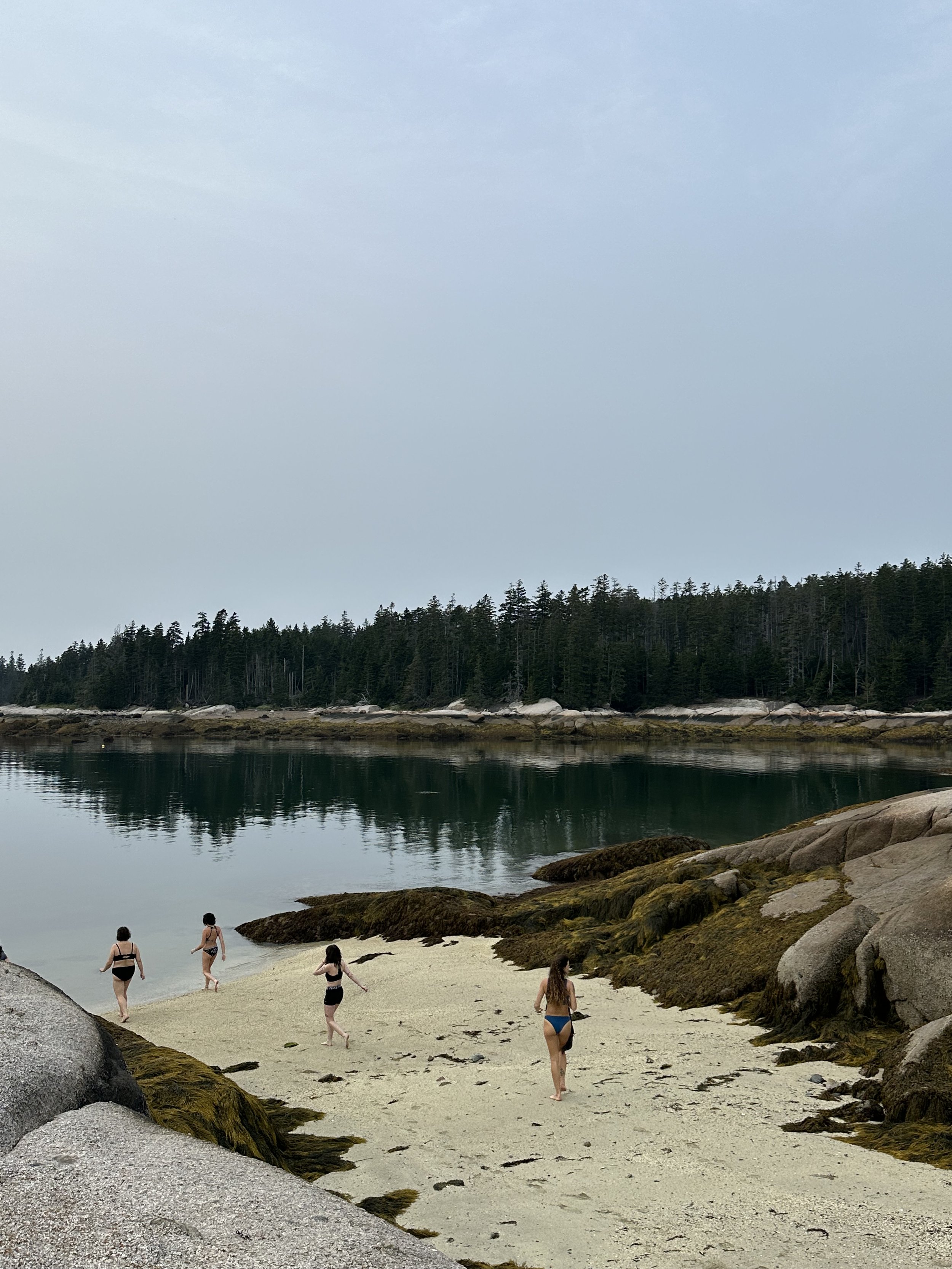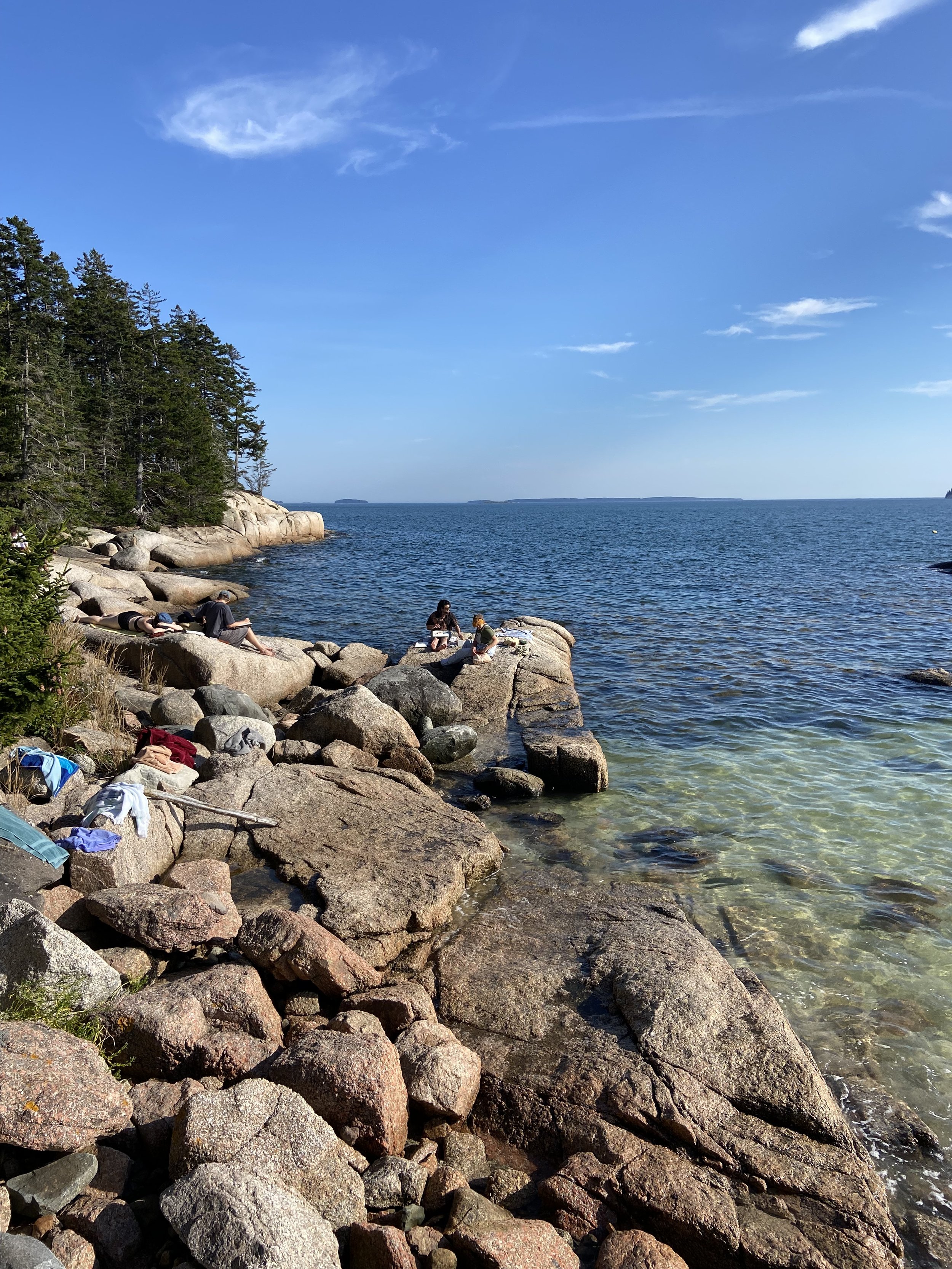Haystack
You know you’re getting close to Haystack when everyone’s front yard begins to fill with lobster traps, and the pine trees grow so tall that they threaten to swallow the thin strip of country road at any moment. If you roll down your window, the ancient, spicy smell of the sea fills your nose and makes your hair stand on end.
This first week of October, I went to Haystack Mountain School of Crafts for five days with about sixty other Mass Art students and faculty. It is a long running tradition between Haystack and Mass Art, started over forty years ago, with art students leaving the chaotic tangle of Boston for a chance to unplug, recharge, and find inspiration in Maine’s beautiful coastal wilderness.
At first, I was unsure. The prospect of being marooned on a remote island, with limited service, in the company of sixty plus strangers gave me pause. So did the unheated cabins, and repeated warnings to pack lots of warm clothes.
So I brought my largest suitcase, stuffed to the gills. I was not messing around. Electric blanket, sleeping bag rated to freezing temperatures, a winter parka, long underwear, rubber boots, and countless pairs of heavy wool socks. I also brought my bikini, a small library of books, and plenty of art making supplies.
I didn’t regret bringing any of it. Well, maybe my electric kettle.
If you multiply my packing list by sixty, and throw in a couple guitars, hula hoops, fishing poles, and teddy bears, you’ll begin to understand the scene of our arrival at Haystack. A massive coach bus dropped us off at the top of Haystack School Road, our thousands of pounds of luggage piled high. It took several pickup truck loads to haul it all down to the camp. This is how art students pack for five days in the great outdoors — everything but the kitchen sink.
A very small percentage of our baggage
The Maine aesthetic
Upon arrival, we were met with a warm greeting from director and staff and showed to our cabins. Designed by the architect Edward Larrabee Barnes and opened to the public in 1961*, the Haystack campus is itself a unique work of art. Made entirely of wood, and built for roughly $8 per square foot, its cabins, art studios, and communal spaces are connected by a series of raised decks and walkways. The whole structure hovers on a massive slab of granite, in the midst of a pine forest, on the edge of the Atlantic. All water used on site comes from the ocean through a desalinization process.
*Haystack School was founded in 1950 in Montville, Maine and moved to its current location on Deer Isle in 1961.
View from the main deck
By the way, the ocean here has intense moods. The blue-green waters swing wildly between two massive tidal shifts twice daily, with a difference of as much as sixteen feet. It's a change that messes with your sense of reality. You can go for a swim at high tide and the next morning return to the exact same spot, only this time to lay down on a bed of dry sand littered with shells. With all its movement, the tide brings curious things. Oysters and snails, vast tangles of seaweed, driftwood, dead things, and sea glass – maybe from a recently consumed six pack… or perhaps, I’d like to believe, from long lost bottles of illicit rum which were run in and out of these coves during prohibition.
High tide
Low tide
While there is no drinking at Haystack, there is much eating to be done. Three square meals prepared every day from scratch by their kitchen staff, plus fresh baked cookies and all the hot coffee and tea you can drink in between. By the second day, we are all trained to come running when the kitchen bell sounds at 8, 12, and 6 — a kind of classical conditioning experiment.
Laid out buffet style, each meal was a smorgashboard. These are a few delicious things I remember in no particular order: rare strips of steak, cheesy roast potatoes, salad with all the fixings, garlic-y housemade dressing, chicken shawarma, hummus and steaming hot pita, aloo gobi, lentil dal, palak paneer, and mango chutney, carnitas tacos, pico de gallo, salsa verde, black beans and rice, tres leches cake, coconut cake, warm brownies with vanilla ice cream, juicy slices of grapefruit, melon, fluffy bagels with cream cheese and jelly, crispy bacon, smokey sausages, pickles, congee, gluten free macaroni and cheese.
The holy dinner bell
Between meals, we also made art. Haystack is home to a full suite of studios, including ceramics, glass, metals, blacksmithing, wood, fibers, printmaking, graphics, and a fab lab. To say it's like a candy store for creatives would be an understatement.
Each year, accompanying Mass Art faculty offer workshops in different studios on campus. As a ceramic artist, I was initially disappointed that we didn’t have access to work in the ceramics studio, or ceramics focused workshops during our time there this year. But in the end, it was beneficial for me because it pushed me to experiment with new mediums.
My favorite was a faculty member’s gelatin printmaking workshop. I loved the near instant gratification you can get with gelatin prints. And the accessibility of it. You can whip up your own gelatin plates in your kitchen and make prints at home. You don’t need a fancy printing press, or a vat of acid. I tried making some simple cat prints. Using tape to block out basic feline features and seaweed collected from the water’s edge to make interesting patterns in the background, working with three colors – green, yellow, and black.
Meow
Gelatin printing
I also participated in a student-led workshop on zine making. We learned how to make an eight page zine out of a single piece of folded paper. This got me excited, thinking about how I can combine my background in writing and storytelling together with art. I will definitely be making more zines in the near future :)
In addition, there were faculty-led workshops on cyanotype printing, wire jewelry making, broom making, and camouflage, as well as nightly artist talks on topics ranging from studio practice, artist residencies and resources for artists, and of course, Mass Art and Haystack history.
On our final night at Haystack, a student organized an exhibition of art made during our time there. I was blown away by what everyone created in just four days. Especially the painters and illustrators who were able to create such realistic renderings of the Haystack landscape. The show was followed by a student led program showcasing poetry, music, song, and dance, among other talents.
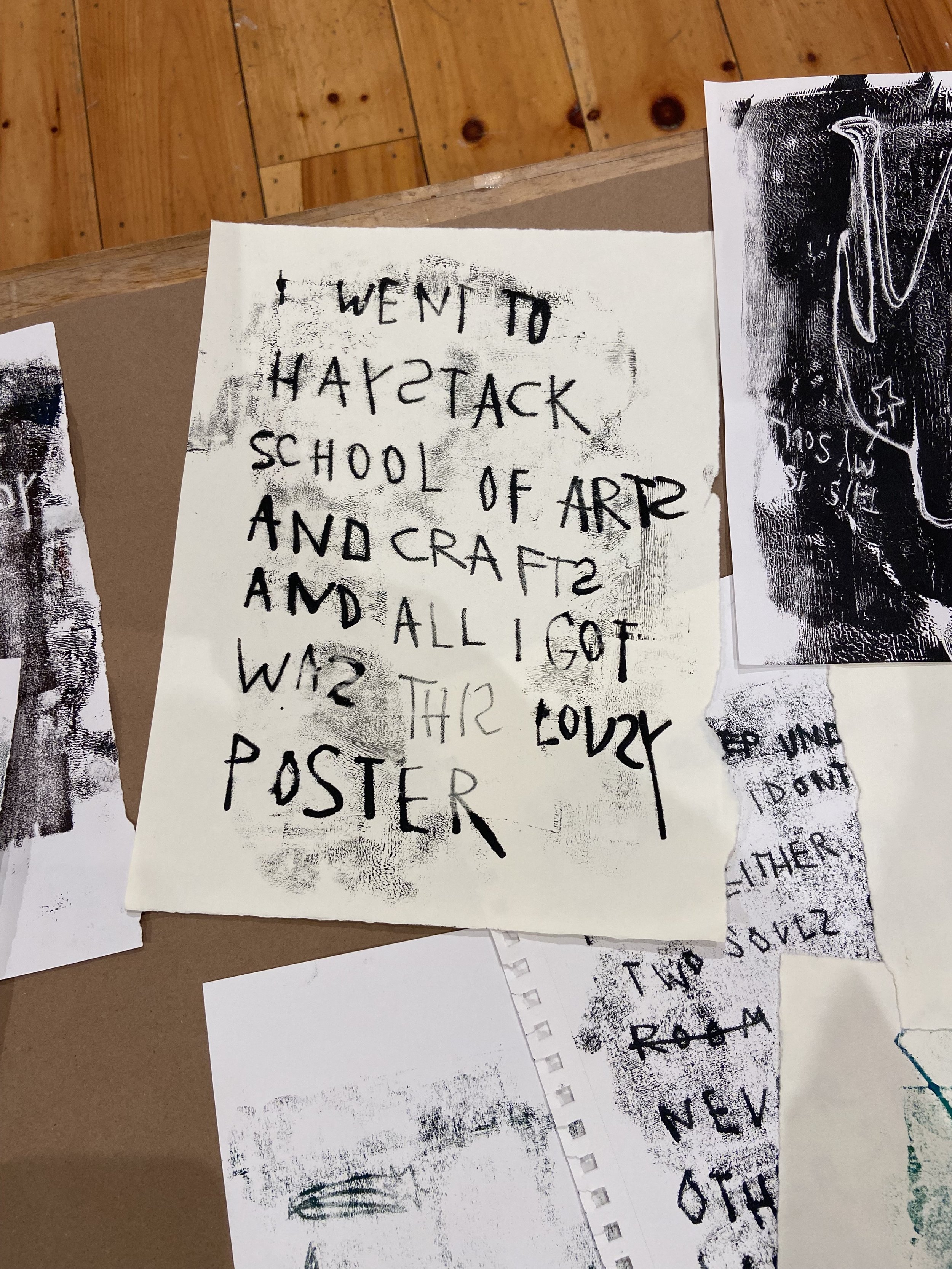
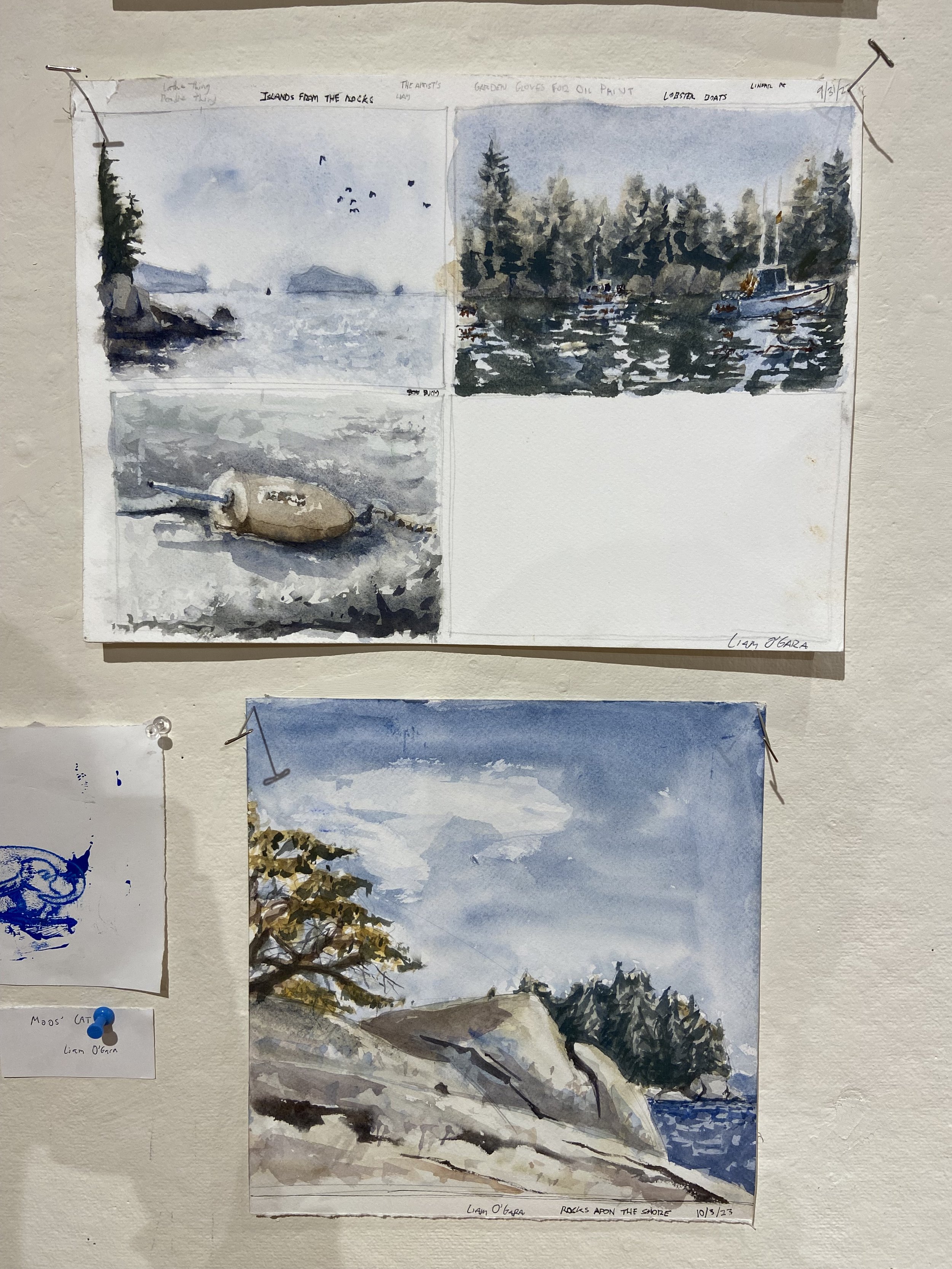
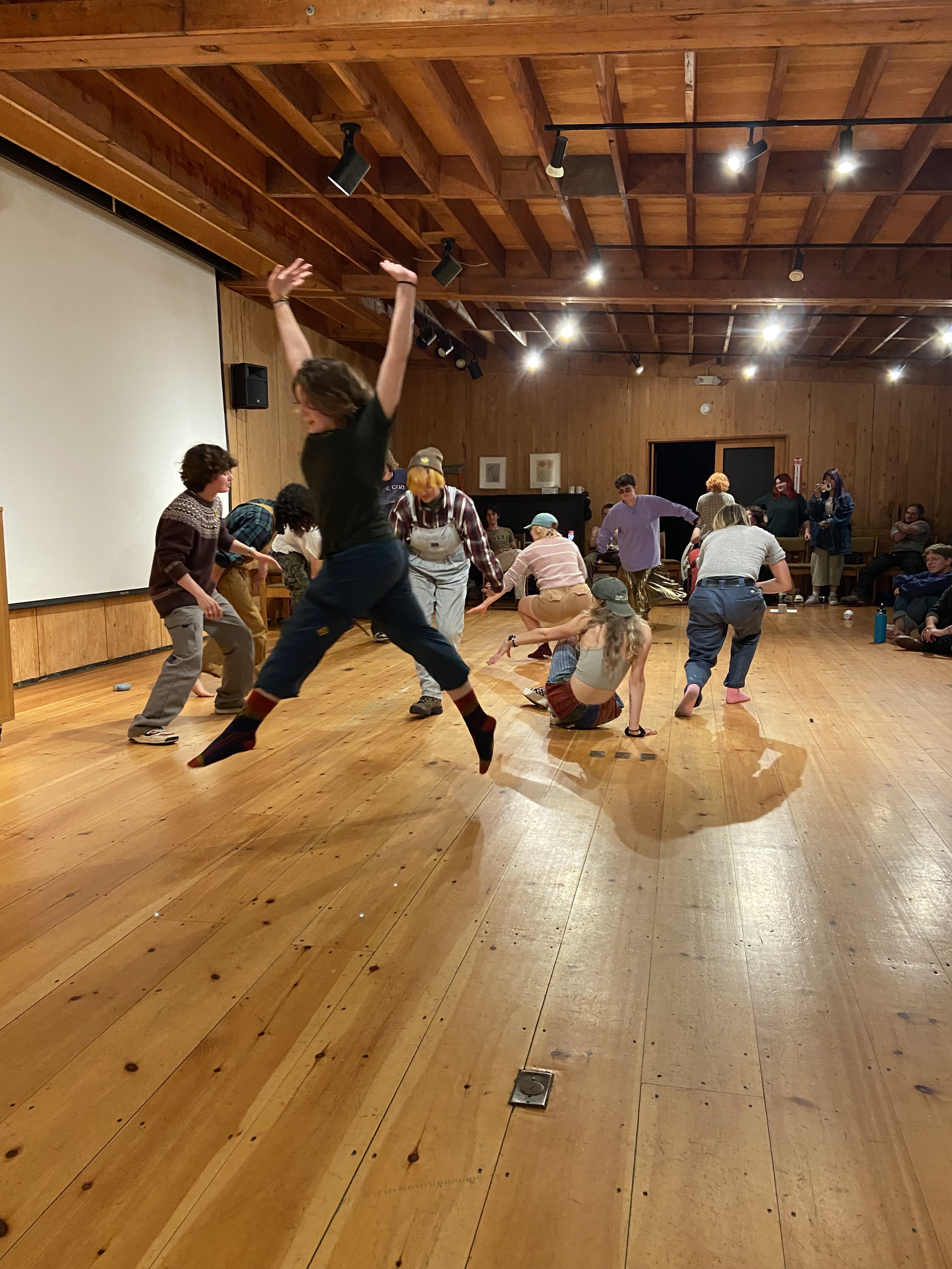
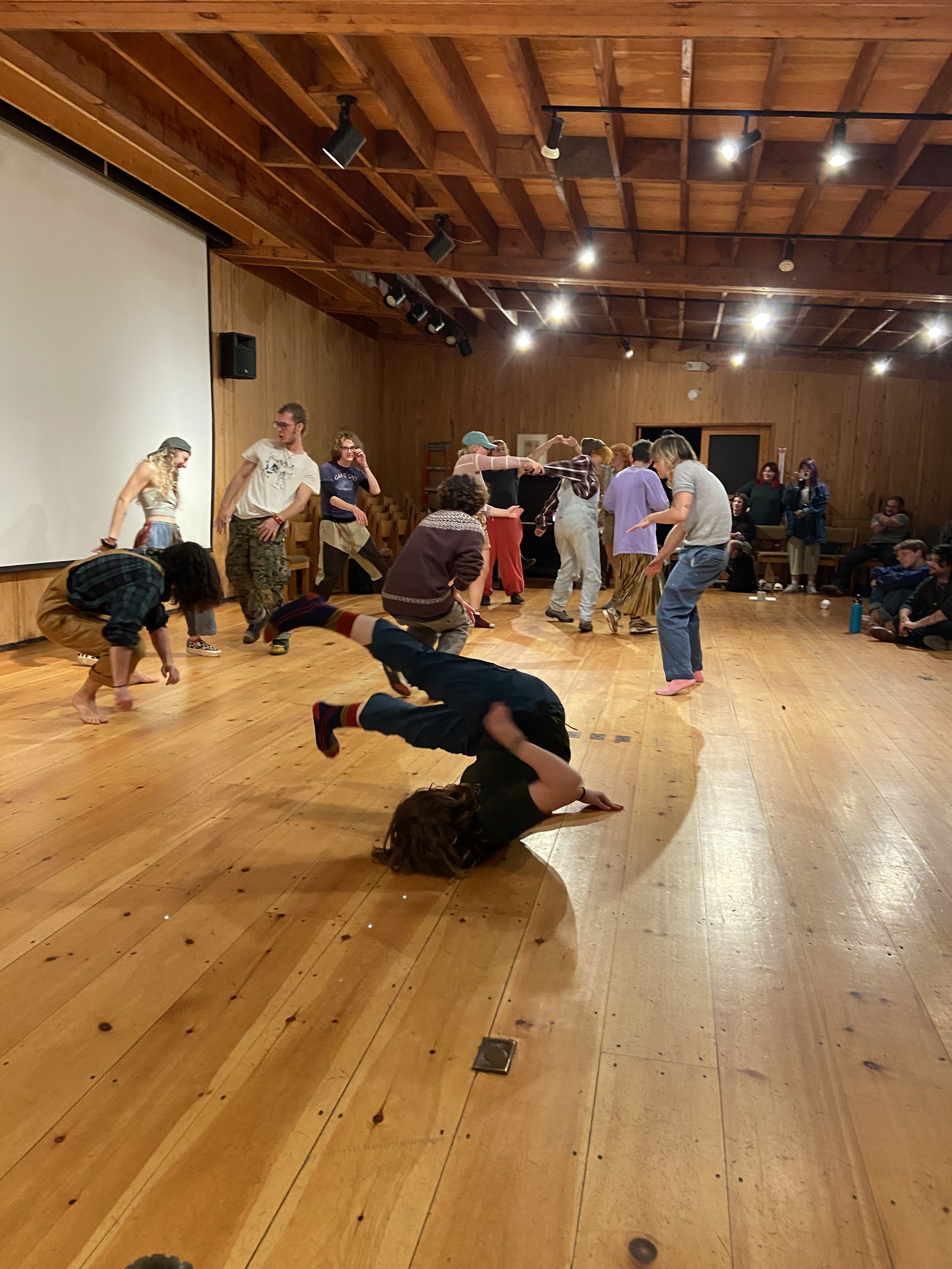
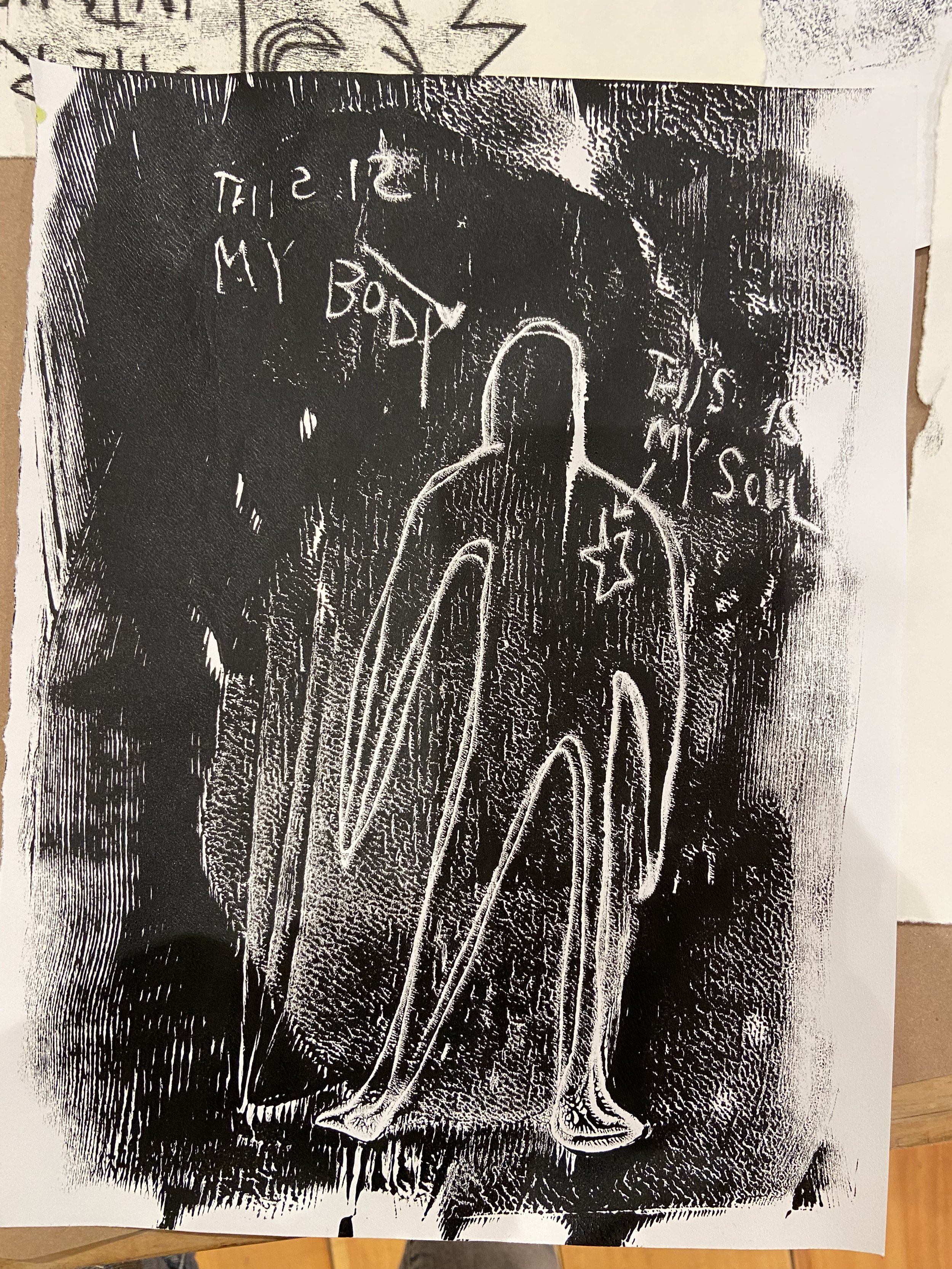
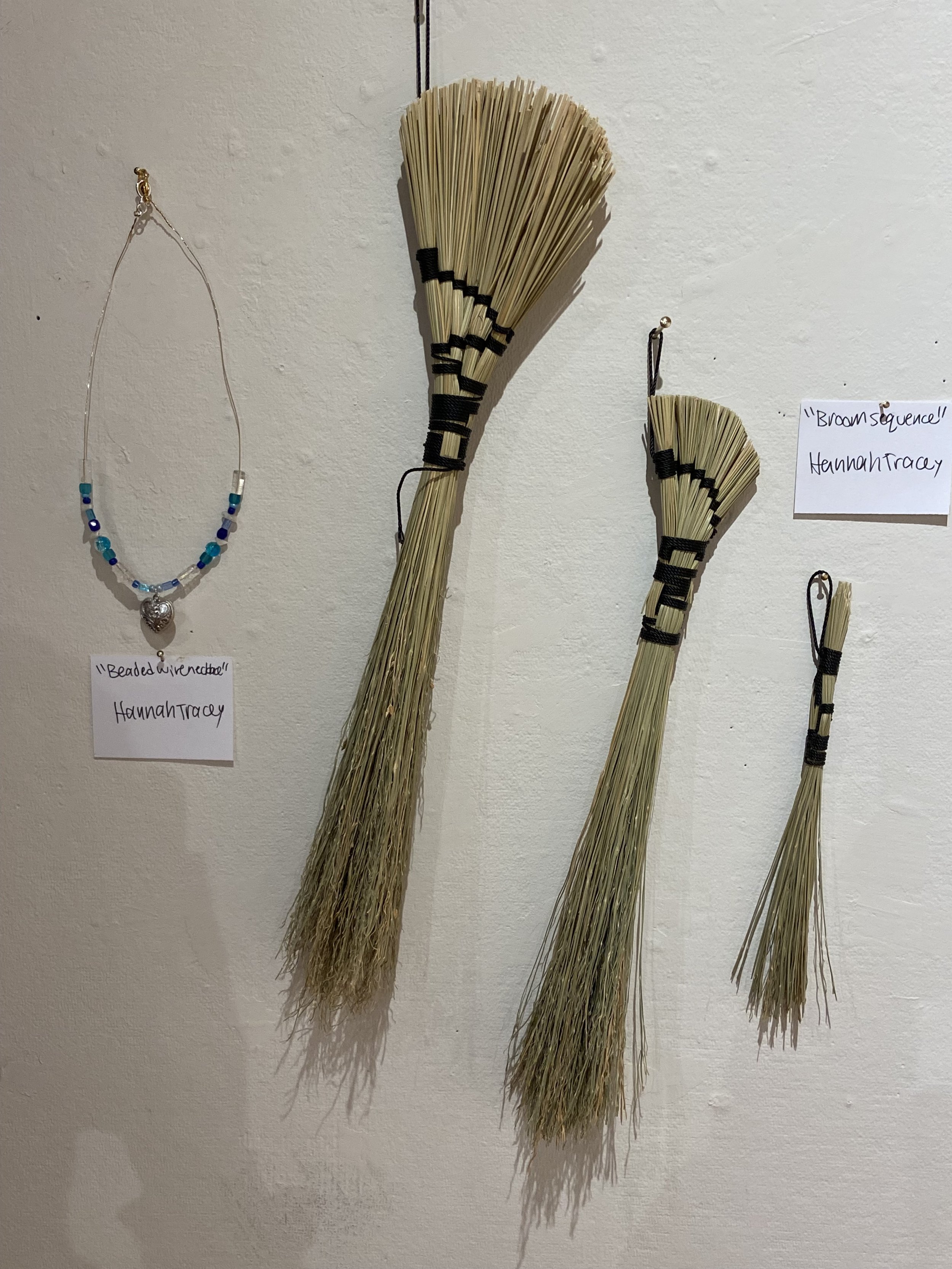
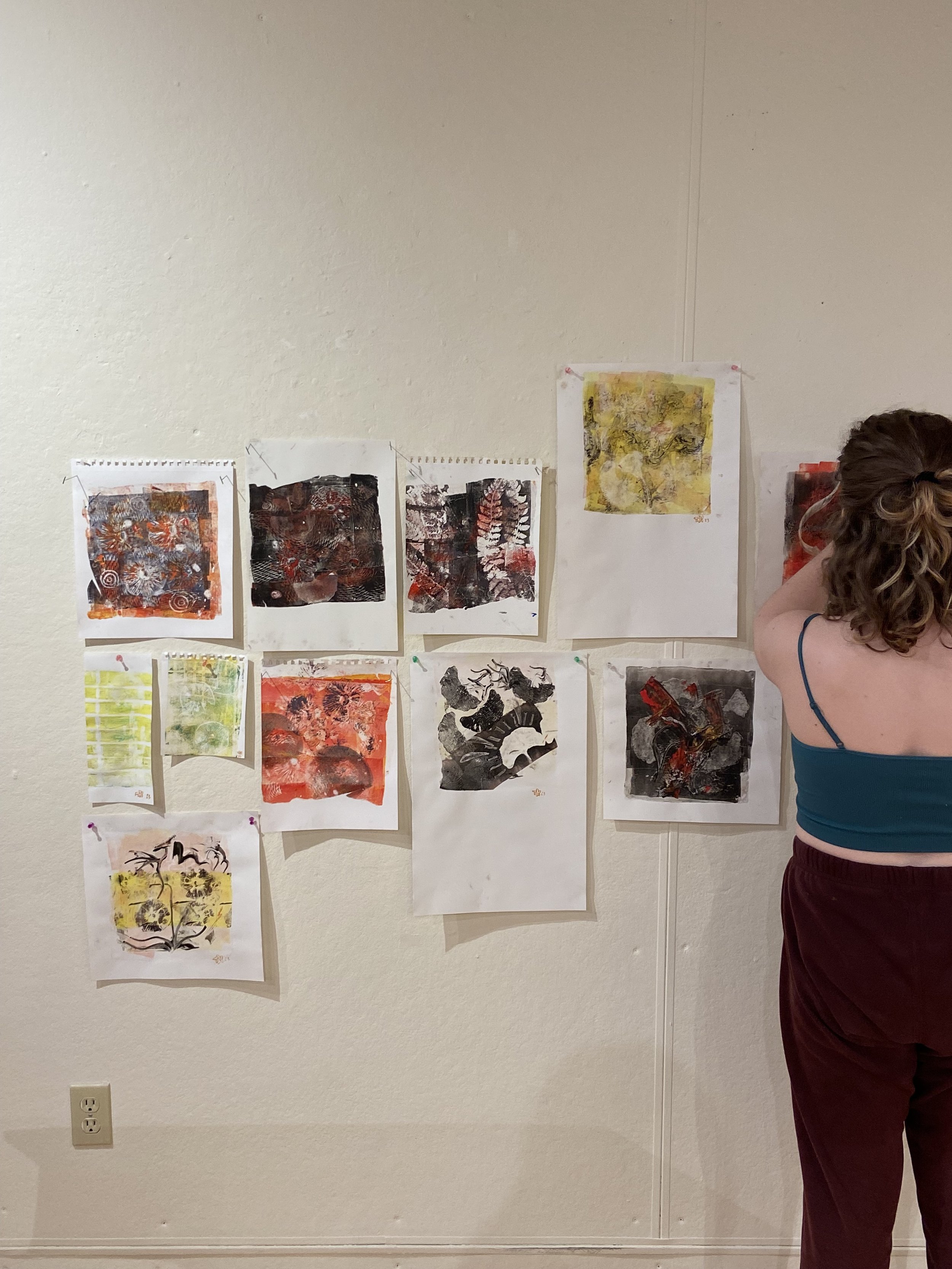
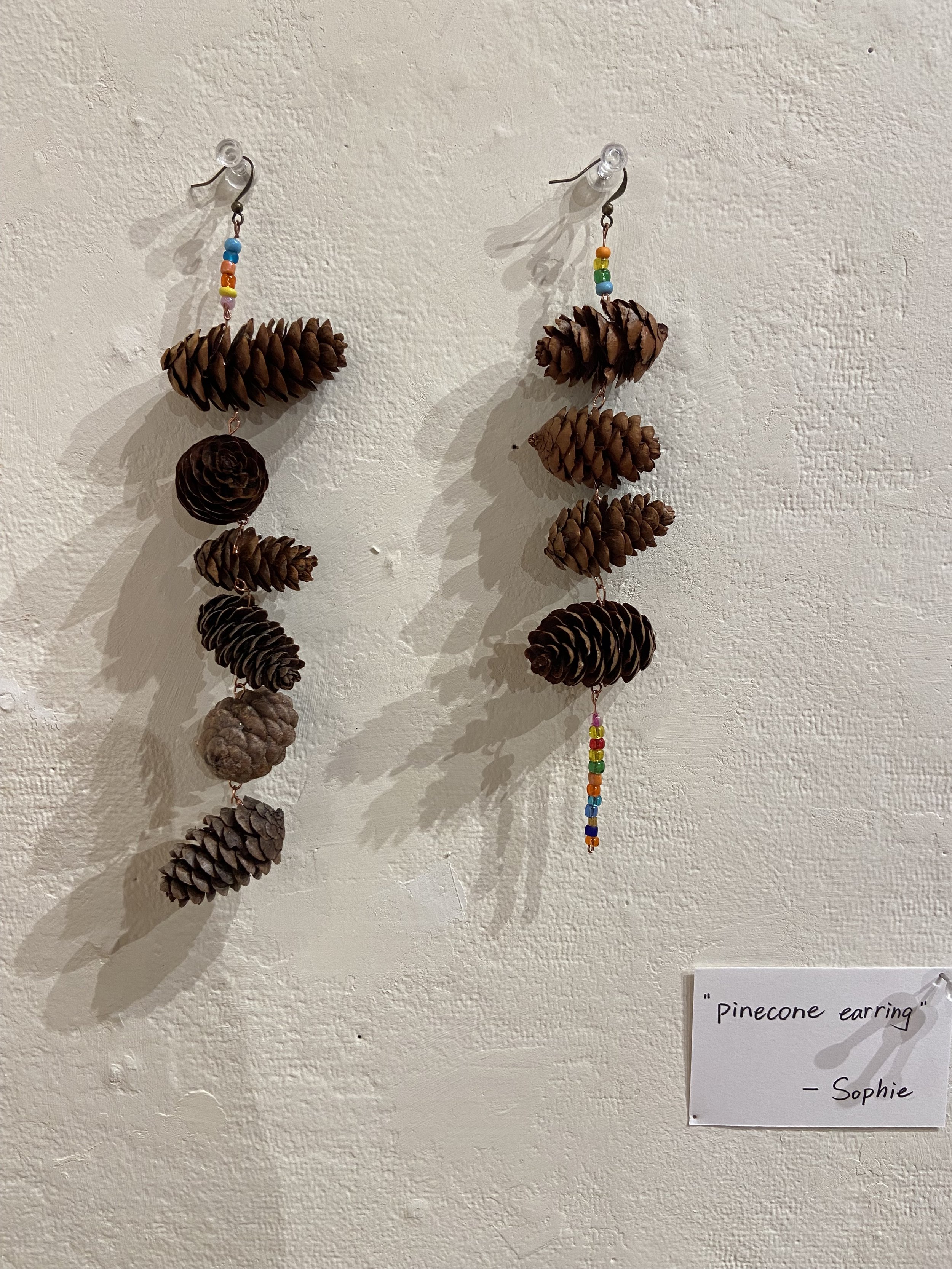
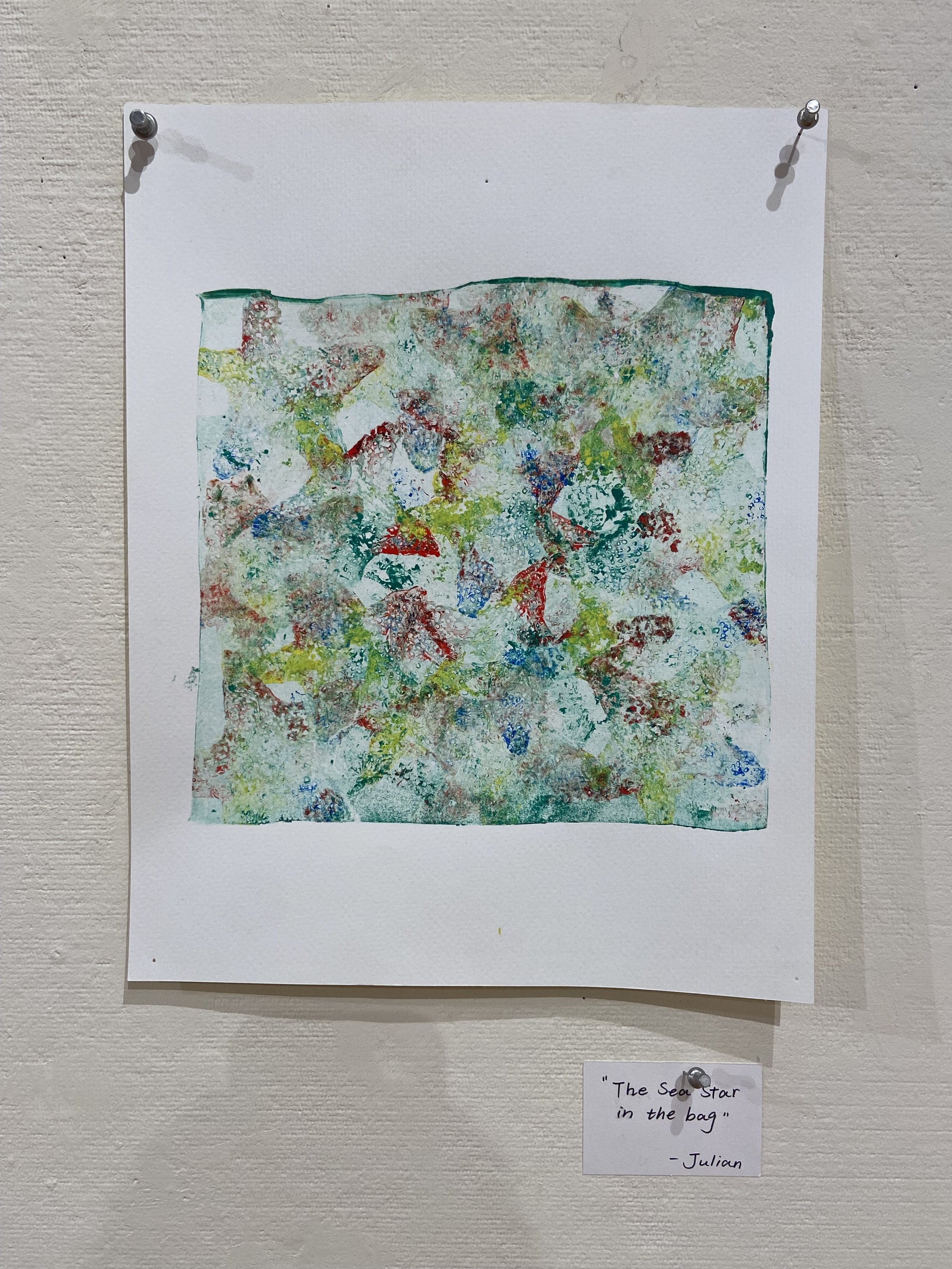
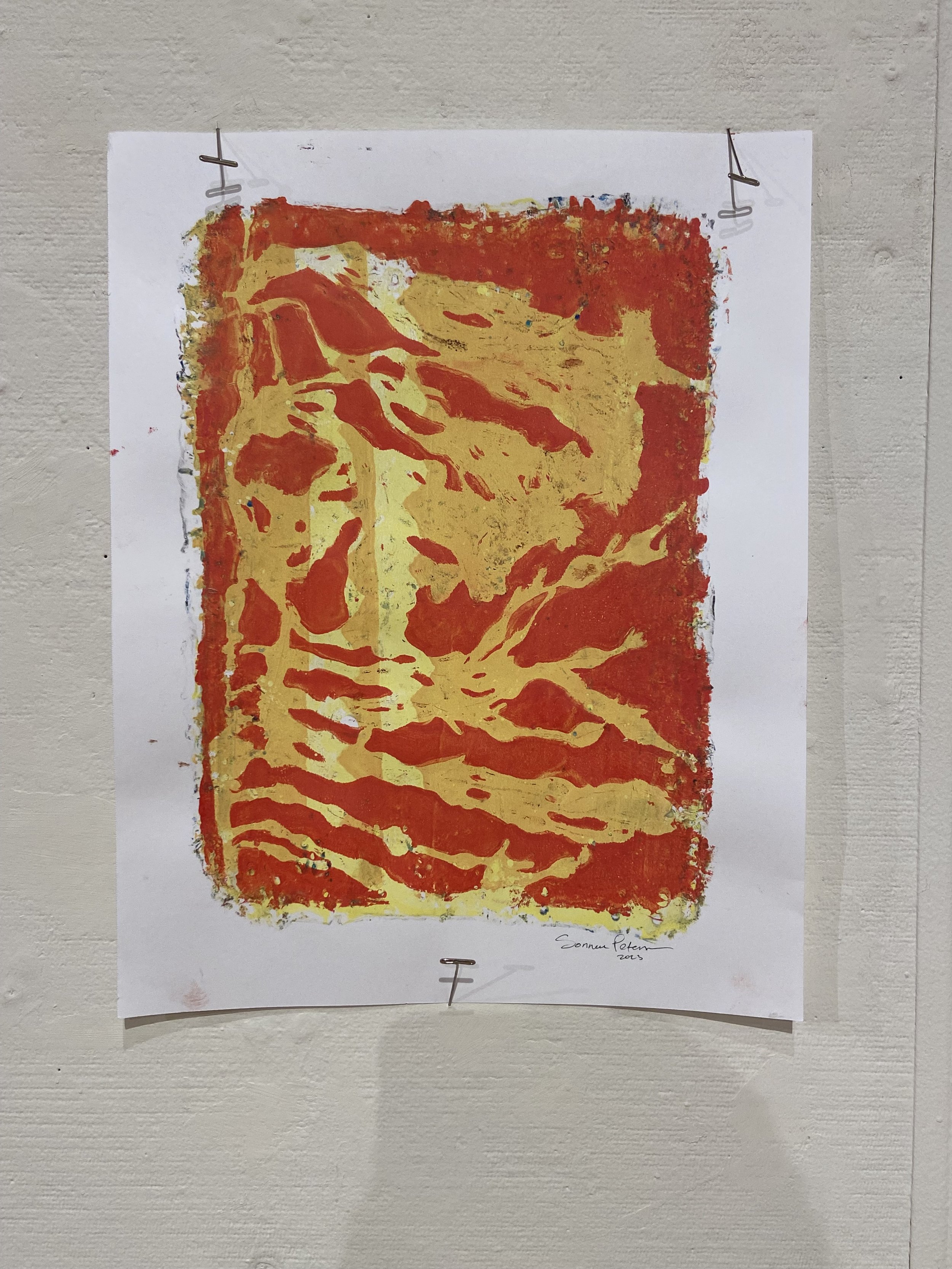

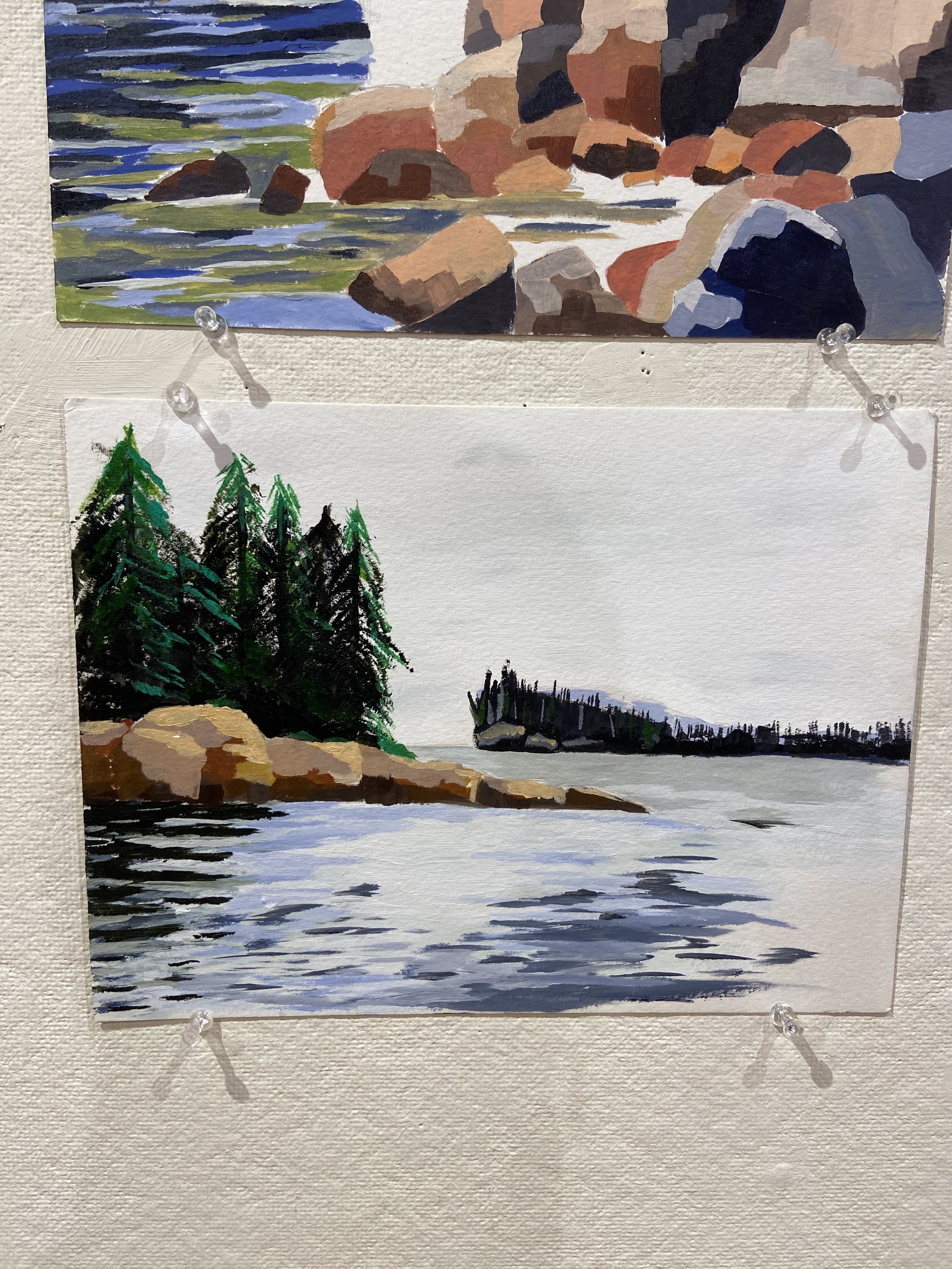
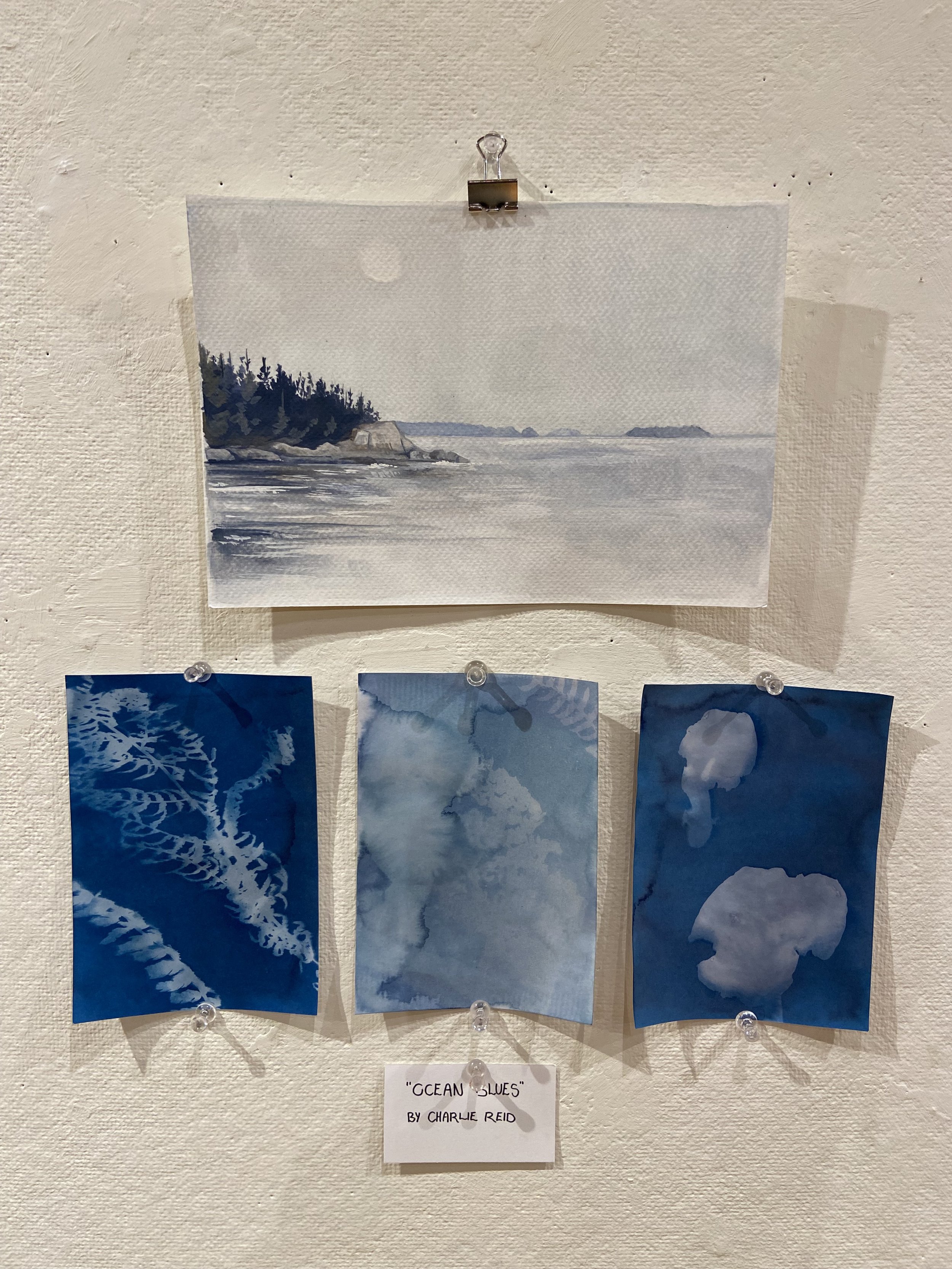

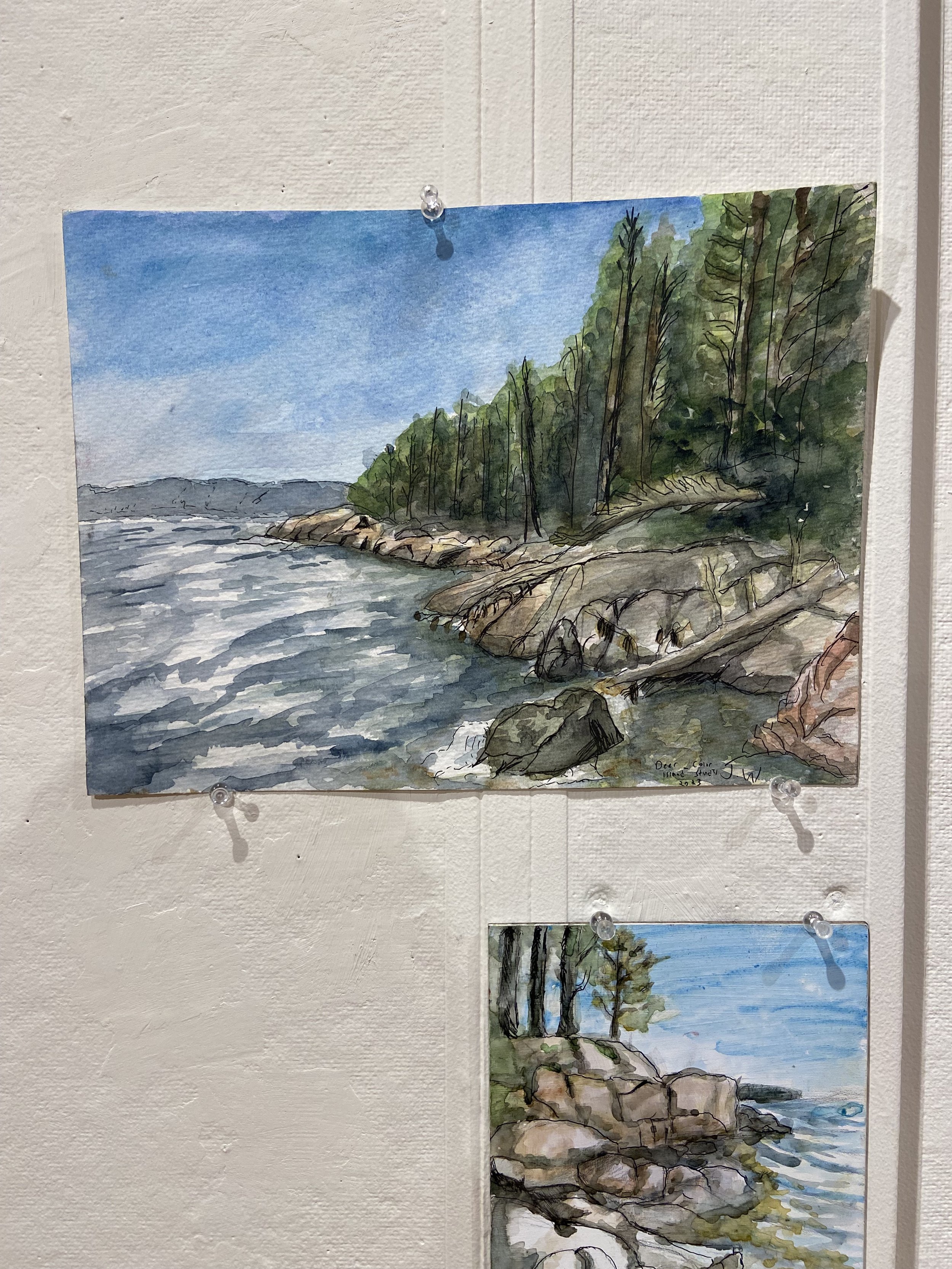
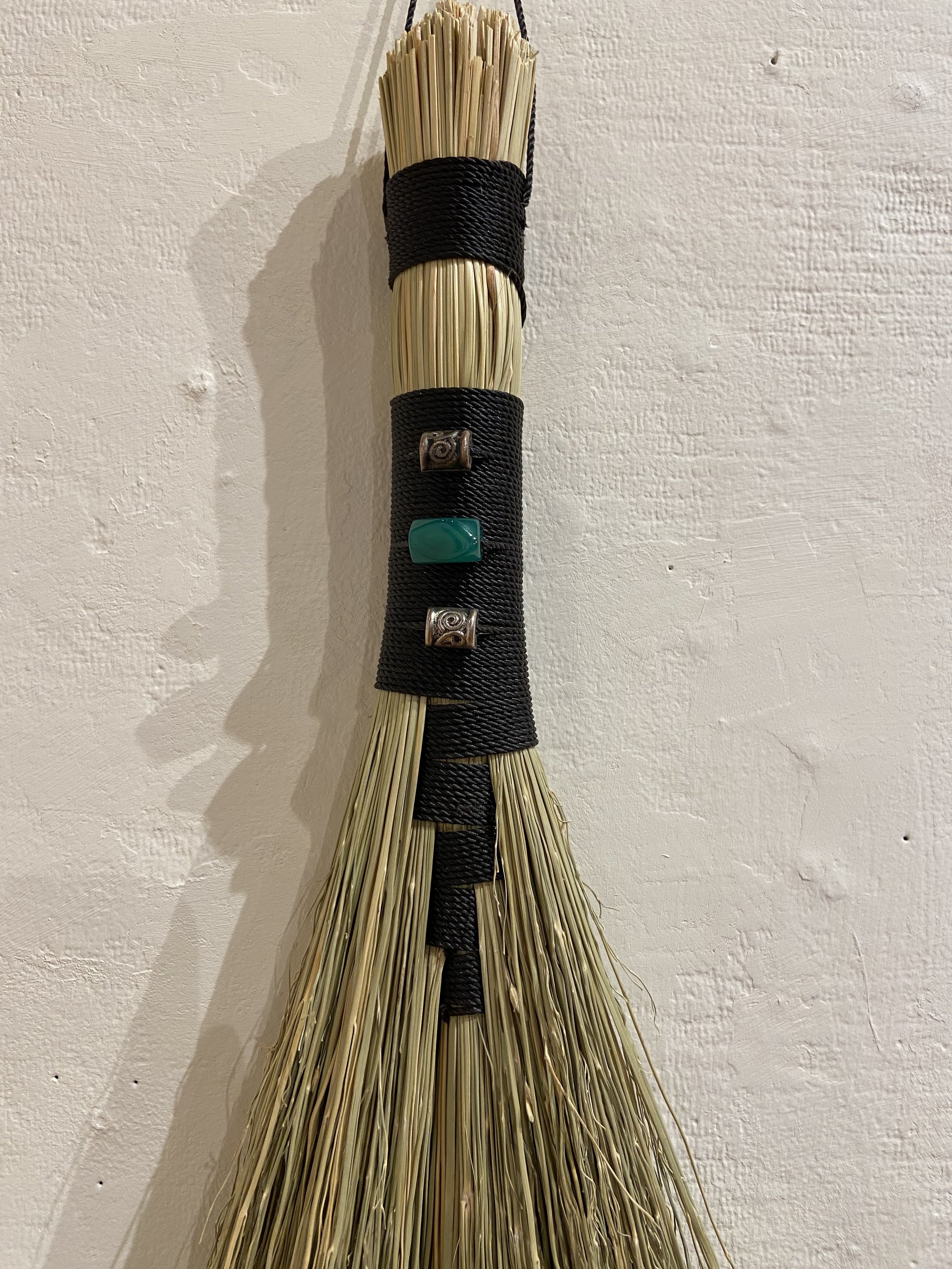
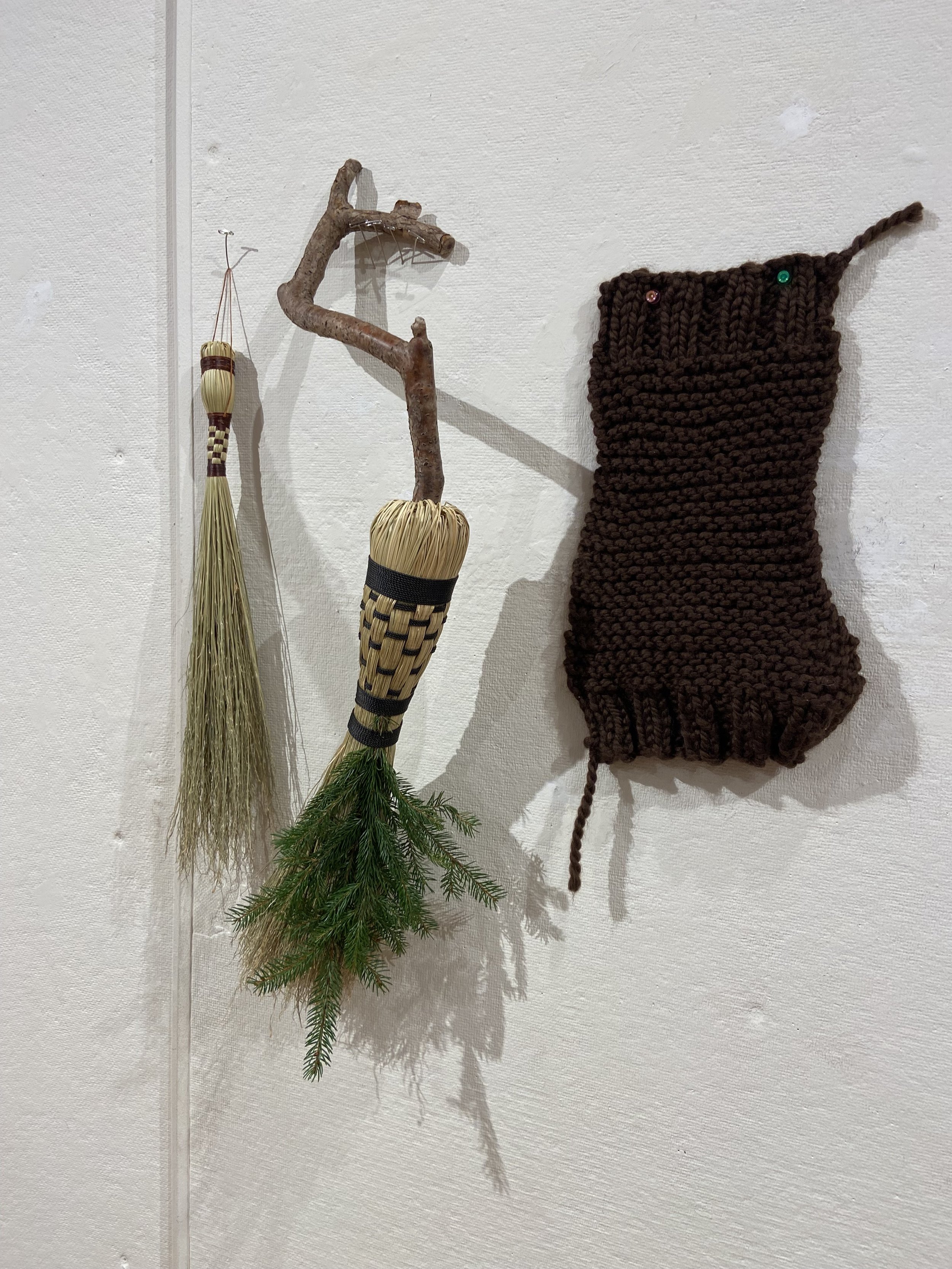

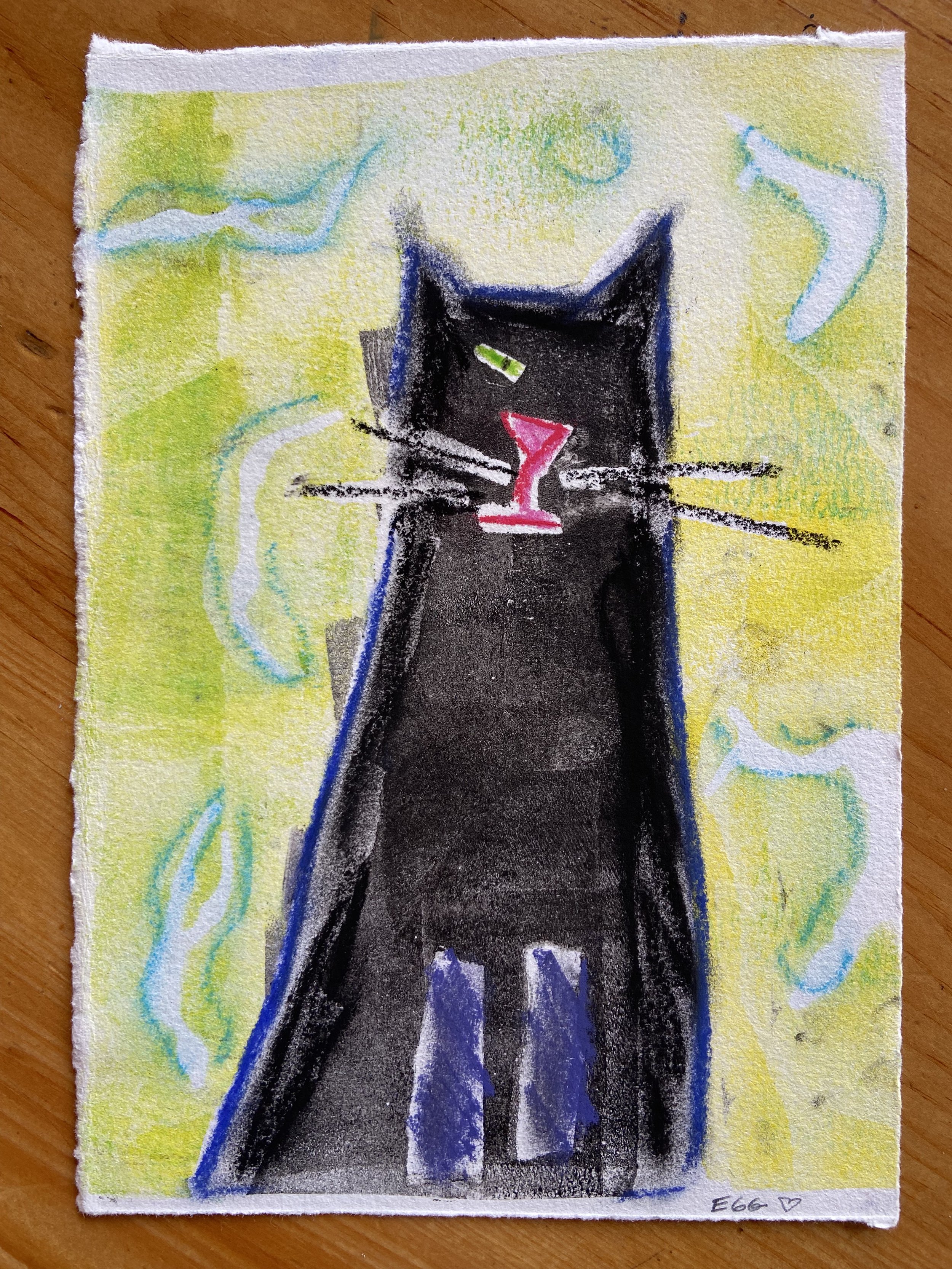
Art making aside, what I enjoyed most about Haystack was being immersed in nature. Since relocating from Hawaii to Boston for art school, I have been homesick for the ocean, for fresh air, sunshine, trees, and rocks. For ink black starry night skies and brilliant full moons. Haystack has these things too, but in its own beautiful way. Towering pine forests are carpeted in luxurious emerald green moss. Walking one day, I spot a flash of bright red between the trees – a fox. In the background, birds sing enchanting unfamiliar songs.
Fire on the rocks
But where the forest and the ocean meet is the most magical, in my opinion. On the very first day, I followed a gang of my compatriots into the ice cold ocean. A plunge that takes your breath away and causes you to shriek involuntarily like you are being murdered. I surprised myself by jumping in every day I was there, then basking dry on the massive granite rocks. I spent a great deal of time laying on these rocks in the sun. There is no other term for it but soul charging.
The first cold plunge 🥶 🥶 🥶 🥶
We had incredibly warm, sunny weather for October
Playing with shadows on the rocks
Most importantly, you can come here to Haystack and not make anything at all. Maybe you just need to rest. To unplug. To slow down. To soak it all in, and return to wherever you came from with renewed inspiration and fresh images to create…
Or maybe you’ll make a spontaneous mermaid on the rocks with a new friend, and then watch, with a mixture of horror and delight, as the high tide slowly carries her out to sea.
I arrived at Haystack an introvert, fearing the awkward company of strangers. As a first year MFA student, I knew no one, but I left with dozens of new connections. I got to know many undergraduate students, some of whom turned out to be working right next door to my studio at school as sculpture, ceramics, and glass majors. In the halls of Mass Art, we may have never spoken to each other. But at Haystack I got to talk with them over meals. I’m excited to check in with them, and see what they are working on this year.
I am also grateful to have met my bunkmate, who was the only other graduate student on the trip. We are in two totally different graduate programs with different classes, so our paths likely would have never crossed had it not been for Haystack. Now, we are working together to organize social events for Mass Art graduate students across different programs.
I look forward to returning to Haystack next year. And now I know exactly what to pack.
If you’re interested in experiencing Haystack for yourself, they have a number of programs including: summer workshops, open studio residencies, technical assistantships, and pre-session volunteering.
Thanks for reading :)
